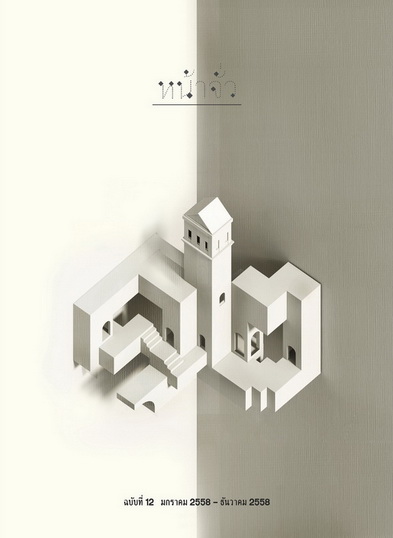บ้านพักอาศัยพื้นถิ่นในชุมชนริมน้ำภาคกลางของประเทศไทยกับความสามารถในการรับมือกับน้ำท่วมในปัจจุบัน/ Vernacular Houses in Riparian Community of Central Plain, Thailand and Coping Capacity of Floods in Present
Main Article Content
Abstract
บทคัดย่อ
บทความนี้นำเสนอการศึกษาพัฒนาการของบ้านพื้นถิ่นรูปแบบต่างๆ ในชุมชนริมน้ำ อำเภอเสนา จังหวัดพระนครศรีอยุธยา และผลกระทบของน้ำท่วมต่อบ้านเหล่านั้น รวมทั้งความสามารถในการรับมือกับน้ำท่วม ซึ่งพื้นที่บริเวณนี้มีน้ำท่วมเกิดขึ้นทั้งแบบเป็นปกติ (ประจำปี) และผิดปกติ (น้ำท่วมรุนแรง) ผลการศึกษาพบว่าบ้านส่วนใหญ่ในชุมชนมีรูปแบบที่สามารถรับมือต่อน้ำท่วมในระดับปกติที่เกิดขึ้นเป็นประจำปีค่อนข้างดี คือมีความเสียหายน้อย และสามารถเข้าใช้ประโยชน์ในบ้านได้ยามน้ำท่วม โดยเฉพาะบ้านที่มีใต้ถุนสูง แต่ในยามน้ำท่วมผิดปกติเช่นในปี 2554 นั้น ความสามารถในการรับมือกับน้ำท่วมของบ้านจะลดลงมาก
จากการศึกษาพบว่ารูปแบบบ้านพื้นถิ่นที่พบในชุมชนที่มีความสามารถในการรับมือต่อความเสี่ยงจากผลกระทบของการเปลี่ยนแปลงน้ำท่วมในปัจจุบันในบริบทของชุมชนริมน้ำภาคกลางได้ดีที่สุด คือบ้านปูน (บ้านโครงสร้างคอนกรีตเสริมเหล็ก) มีใต้ถุน เพราะบ้านแบบนี้มีความเสียหายจากน้ำท่วมน้อยที่สุด ทั้งองค์ประกอบด้านงานโครงสร้างและด้านงานสถาปัตยกรรม จากการศึกษานี้สรุปได้ว่าการใช้รูปแบบทางสถาปัตยกรรมแบบพื้นถิ่นประยุกต์กับวัสดุและเทคโนโลยีการก่อสร้างที่ทันสมัยขึ้นสามารถช่วยเพิ่มความสามารถในการรับมือต่อปัญหาน้ำท่วมได้เป็นอย่างดี
Abstract
The paper presented the development of vernacular houses in riparian community of Sena District, Phranakhon Si Ayutthaya Province and analysed the exposure to the risks of flooding in the area and explored the coping capacity to impact of floods both normal and unusual floods. It was found that most houses could cope with the annual floods reasonably well with minimal damages and accessibility to the houses when there were usual floods. This coping capacity was dramatically reduced in the 2011 flood.
The style of vernacular houses in the community that is adaptable to the unusual flood is house built on piles with concrete structure. The houses built in this style and material have least damages to their structure and architectural elements when there is flood. The study concluded and suggested that the use of vernacular house style with modern construction material and technology helps to improve the coping capacity of floods in the future.

